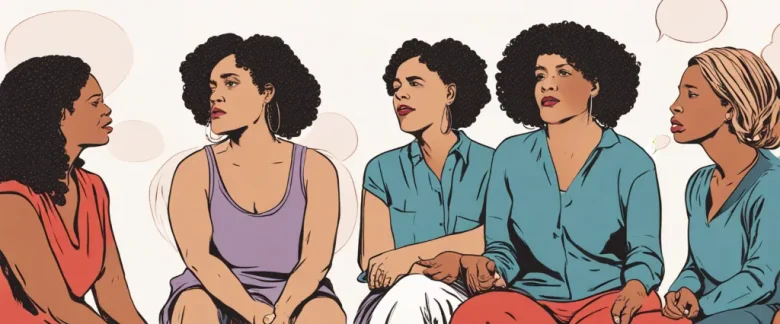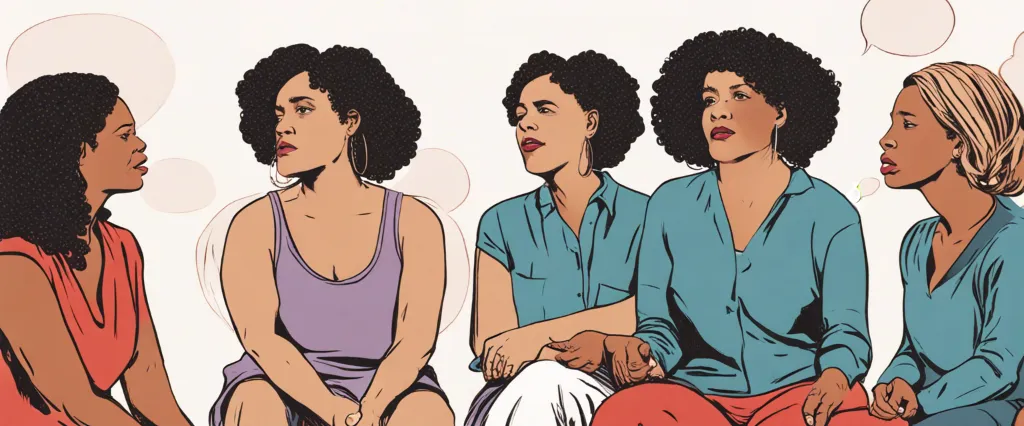In “The Vagina Monologues” by Eve Ensler, a groundbreaking play that has captivated audiences worldwide, the author fearlessly delves into the complex and often misunderstood world of female sexuality. Through a series of intimate and poignant monologues, Ensler gives voice to women’s experiences, addressing topics such as body image, desire, pleasure, and violence with unflinching honesty. As a feminist writer, activist, and performer, Eve Ensler has dedicated her life to uplifting women and shedding light on the multifaceted nature of their identities. With her unapologetic exploration of the vagina as a metaphor for womanhood, Ensler invites readers to embrace and celebrate the power and resilience inherent in female sensuality.
Chapter 1: Embracing Female Sexuality and Identity
Ensler gathers these narratives from her interviews with women from different cultural backgrounds, ages, and ethnicities, providing a platform for their voices to be heard.
The chapter opens by discussing the various emotions associated with vaginas, highlighting the shame and embarrassment that society often attaches to this part of the female anatomy. Ensler emphasizes the need to challenge and break free from this stigma, aiming to celebrate and embrace the diversity and power of the female body.
Throughout the chapter, Ensler introduces readers to multiple women who share their thoughts on menstruation, the naming of vaginas, and their sexual experiences. Each story brings a unique perspective, shifting the narrative from something that should be hidden and repressed to an essential aspect of a woman’s identity.
These monologues reveal deep personal connections with vaginas, often encompassing pain, trauma, and liberation. Women discuss their relationships with their genitals, recounting experiences of pain during childbirth, sexual abuse, and the significance of their first period. These stories highlight the importance of recognizing and honoring the experiences of women, as well as the need for open and honest discussions surrounding sexuality.
Overall, Chapter 1 aims to challenge societal norms, encouraging women to embrace their identities and explore the nuanced and complex nature of their vaginas. Through these diverse and empowering narratives, Ensler promotes a celebration of femininity and calls for the acceptance of female sexuality.
Chapter 2: Exploring Feminine Empowerment and Liberation
The chapter begins with a monologue titled “The Woman Who Loved to Make Vaginas Happy,” which celebrates the sexual agency and empowerment of women. It emphasizes the importance of self-love and embracing one’s desires, challenging societal expectations and norms.
Following this, Ensler presents the story of “The Little Coochie Snorcher That Could,” a monologue that confronts the issues of child sexual abuse and the impact it has on a girl’s self-image and sexuality. The monologue touches on the cycle of abuse, the struggle for self-acceptance, and the transformative power of healing and reclaiming one’s own body.
Additionally, “My Short Skirt” sheds light on the experiences of women who face judgment and victim-blaming due to their wardrobe choices. Ensler challenges the notion that a woman’s clothing invites or justifies sexual assault, emphasizing the importance of consent and personal autonomy.
Lastly, the chapter ends with “Hair,” a monologue that addresses societal standards of beauty and the pressure women face to conform to them. It explores issues of body confidence, cultural expectations, and the freedom that comes with embracing one’s authentic self.
Chapter 3: Challenging Gender Stereotypes and Taboos
In this chapter, Ensler interviews an array of women, representing diverse backgrounds and experiences, to shed light on how gender stereotypes and cultural taboos shape their lives.
The chapter begins by exploring the concept of the “perfect vagina” as dictated by society’s beauty standards, which leads many women to feel shame or unworthiness due to their own natural variation. Ensler highlights the damaging effects of these expectations on women’s self-esteem and sexual satisfaction.
The interviews then turn to women who have experienced sexual violence or harassment, examining the impact this trauma has on their sense of self and sexual agency. Ensler emphasizes the urgent need to challenge the rape culture embedded in society, advocating for education and dialogue as means to empower survivors and advocate for their rights.
Additionally, the chapter touches upon various taboos associated with women’s bodies, such as menstruation and menopause. Ensler strives to break the silence around these natural processes, encouraging women to embrace their bodies fully and normalize conversations about female reproductive health.
Lastly, Ensler explores the complexity of mother-daughter relationships and the role of mothers in instilling shame or empowerment in their daughters’ bodies and sexuality. She highlights the necessity of fostering open and supportive environments for girls, free from judgment or oppressive gender roles.
Chapter 4: Addressing Sexual Violence and Abuse

The chapter starts with a monologue titled “My Short Skirt,” which challenges the notion that clothing choices justify sexual violence. It emphasizes the importance of consent and personal empowerment. The monologue “The Woman Who Loved to Make Vaginas Happy” follows, highlighting the transformative power of sexual pleasure.
The chapter delves into the stories of survivors of sexual violence. The monologue “Reclaiming C*nt” depicts the journey of a woman overcoming the trauma inflicted on her by using the word “c*nt” in a positive and empowering way. Another monologue, “The Little Coochie Snorcher That Could,” tells the story of a young girl who faces sexual abuse and the difficulties she encounters when trying to disclose her experience.
A particularly heartfelt monologue is “Not So Happy Fact,” which sheds light on the sexual abuse faced by girls as young as five years old. This monologue emphasizes the importance of educating young girls about their bodies and boundaries to prevent such abuse.
It addresses the long-lasting impact of these experiences and encourages society to listen to survivors, believe their stories, and provide support. Through these stories of resilience and empowerment, the chapter advocates for a world where sexual violence and abuse are not tolerated and where women can heal and reclaim their bodies.
Chapter 5: Celebrating Diversity and Inclusivity
The chapter begins by sharing anecdotes from women of different ethnic backgrounds and cultures, all emphasizing the unique challenges they face regarding their vaginas and sexuality. These stories shed light on the cultural taboos, stereotypes, and repressive beliefs that women often encounter, highlighting the need for acceptance and celebration of diverse experiences.
Ensler interviews a transgender woman, who discusses her journey of self-discovery and acceptance. This woman shares her experience of realizing her true identity and undergoing hormone replacement therapy, discussing how she embraces her femininity despite societal norms.
The chapter also touches upon the experiences of disabled women, featuring a woman with cerebral palsy who finds liberation through self-pleasure and the exploration of her own body. This narrative challenges ableist perspectives and emphasizes the right of every woman, regardless of their physical abilities, to experience pleasure and intimacy.
Throughout the chapter, Ensler emphasizes the importance of inclusive language and creating an environment where all women, regardless of their identity or background, feel heard, validated, and celebrated. It encourages readers to embrace and honor the diverse perspectives and experiences of women, reminding them that every woman’s story is significant and deserves to be acknowledged.
Chapter 5 delves into the experiences of women from various ethnic backgrounds, transgender women, and disabled women. It highlights the need for inclusivity and acceptance while challenging societal norms and stereotypes. Ensler promotes celebration of diversity, encouraging readers to create spaces where all women are validated and celebrated.
Chapter 6: Nurturing Sisterhood and Support
The chapter begins with Ensler discussing her experience of organizing gatherings called “Talking Circles,” where women come together to discuss their experiences with their bodies, sexuality, and society’s expectations. Through these circles, women connect, support each other, and acknowledge their shared struggles. Ensler emphasizes that often women are taught to be competitive with each other, but in these spaces, they can break that pattern and cultivate solidarity.
Ensler shares intimate stories from various women around the world, addressing topics like body image, reproductive health, and sexual violence. The chapter retells instances of women overcoming societal pressures and reclaiming their bodies and identities. It emphasizes the power that is unlocked when women provide each other with a listening ear, validation, and support.
Ensler encourages women to create their own safe spaces, such as organizing their own Talking Circles or participating in existing support groups. She emphasizes the significance of genuine connections between women and the transformative power of these connections.
By coming together, sharing experiences, and providing validation, women can combat societal pressures and stereotypes, empowering themselves and each other in the process.
Chapter 7: Amplifying Women’s Voices and Stories
The chapter begins with Ensler discussing her initial hesitation to write the monologues, as she wondered how she, as a playwright, could adequately capture the experiences of all women. However, she recognized that by crafting a diverse range of stories, she could amplify the voices of women who have been silenced or ignored.
Ensler emphasizes the importance of listening to women’s stories as a tool for feminist activism. She believes that sharing personal experiences of joy, pain, sexuality, and trauma can break societal taboos, challenge oppressive systems, and create spaces for healing. Through these stories, women are able to connect, find common ground, and fight against gender violence and discrimination.
The chapter highlights the impact of the V-Day movement, a global activist campaign founded by Ensler that focuses on raising awareness and funds to end violence against women and girls. Ensler recounts the powerful testimonials she received from women around the world who shared the impact participating in the V-Day events had on their lives.
Furthermore, Ensler discusses the transformative power of theater, explaining how the performance of The Vagina Monologues has become a worldwide phenomenon. The theatrical production has provided a safe space for women to share their stories, heal, and foster dialogue about women’s sexuality and experiences.
By giving women the platform to share their personal stories, Eve Ensler aims to create a world where no woman’s voice goes unheard, and where women are empowered to define and celebrate their own experiences.

Chapter 8: Inspiring Social Change and Equality
Ensler begins by discussing the worldwide performance of “The Vagina Monologues” as part of V-Day, an annual movement to end violence against women and girls. She highlights the significance of the play as a tool for activism and empowerment, as it serves as a platform to raise awareness and provoke discussions about women’s issues.
Furthermore, Ensler emphasizes the transformative power of the play for the performers themselves. She shares stories of women who participate in the production, many of whom have experienced trauma or marginalization. Through their involvement, they regain their voices, build resilience, and find healing.
The chapter also delves into the reactions and reception of “The Vagina Monologues” in various cultural contexts. Ensler addresses criticism and controversy surrounding the play, particularly regarding its explicit language and portrayal of female sexuality. Nevertheless, she argues that such conversations are essential in challenging societal taboos and advancing conversations about sexual liberation and gender equity.
Ensler concludes the chapter by affirming the continued importance of “The Vagina Monologues” as a catalyst for social change and the fight for equality. She invites readers to engage in activism and create their own forms of artistic expression to challenge the status quo and dismantle systems of oppression.
Through its performances and the conversations it generates, the play continues to contribute to the fight for gender equity and the end of violence against women.
After Reading
In conclusion, The Vagina Monologues by Eve Ensler is a brave and thought-provoking exploration of female sexuality and the experiences of women across various cultures and backgrounds. Through a series of intimate first-person monologues, Ensler sheds light on the complexities and injustices surrounding women’s bodies, desires, and identities. The book serves as a powerful call to action, advocating for understanding, acceptance, and empowerment for all women. Ensler’s compelling anecdotes and unapologetic storytelling challenge societal norms and encourage dialogue surrounding important topics such as violence against women, body positivity, and sexual pleasure. The Vagina Monologues is a landmark work that continues to inspire and educate readers, sparking crucial conversations about gender, feminism, and equality.
1. “Attached: The New Science of Adult Attachment and How It Can Help You Find—and Keep—Love” by Amir Levine and Rachel Heller
This book explores the concept of attachment styles and how they affect our romantic relationships. Drawing from scientific research, the authors break down the different attachment styles and offer insights into how they impact our behavior, emotions, and the way we communicate love. “Attached” sheds light on the importance of understanding our own attachment style as well as our partners’, helping us build healthier and more fulfilling relationships.
2. “Mating in Captivity: Unlocking Erotic Intelligence” by Esther Perel
In “Mating in Captivity,” Esther Perel challenges conventional beliefs about love, desire, and intimacy within long-term relationships. This thought-provoking book explores the complexities and contradictions of maintaining passion and desire while being connected to a single partner. Perel draws from her extensive experience as a couples therapist to offer practical advice and fresh perspectives on nurturing desire, fostering mystery, and reimagining monogamy.
3. “The Ethical Slut: A Practical Guide to Polyamory, Open Relationships & Other Adventures” by Janet W. Hardy and Dossie Easton
For readers interested in exploring alternative relationship styles, “The Ethical Slut” provides a comprehensive and non-judgmental guide to ethical non-monogamy, open relationships, and polyamory. This book delves into navigating boundaries, communication, and emotional well-being within unconventional relationship dynamics. It offers valuable insights for those seeking to build consensual, fulfilling relationships beyond traditional norms.
4. The Seven Principles for Making Marriage Work” by John Gottman and Nan Silver
Renowned relationship expert John Gottman presents a research-based approach to creating and maintaining a strong and satisfying marriage. The book outlines the seven principles that contribute to successful partnerships, including fostering friendship, managing conflict, and nurturing positive interactions. “The Seven Principles for Making Marriage Work” is a valuable resource for couples seeking to deepen their connection and build a lasting, loving relationship.
5. “Come As You Are: The Surprising New Science that Will Transform Your Sex Life” by Emily Nagoski
Emily Nagoski, a leading sex educator, dives into the scientific understanding of women’s sexual desire, pleasure, and response in “Come As You Are.” The book dismantles myths surrounding female sexuality and offers practical and empowering advice for women to develop a healthier relationship with their own bodies and desires. It emphasizes the importance of understanding individual sexuality and embracing personal differences, providing invaluable insights for women and their partners.




